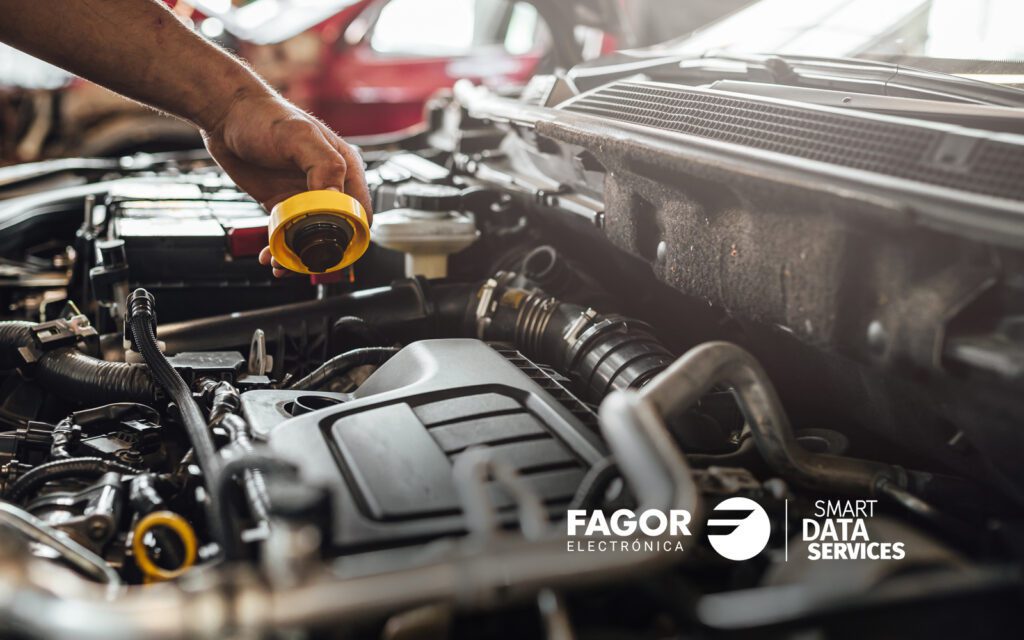The maintenance activity in fleet management is of paramount importance to provide excellent customer service, the best way for a vehicle to bill is to be on the move completing services and this depends largely on the care of the fleet.
Maintenance prevents the vehicle from stopping working and consequently the customer from being affected by a circumstance unrelated to the service.
Each company approaches the maintenance of its vehicles in the way that is most efficient for its interests, especially from a cost point of view, but in most cases a maintenance system is established that is based on the prevention and correction of possible faults or breakdowns.
Maintenance systems are mainly based on two basic types of maintenance, preventive and corrective, which are discussed below.
Types of Fleet Maintenance
We can classify the types of maintenance into two main categories:
- Corrective maintenance.
- Preventive maintenance.
Preventive maintenance is that which is responsible for guaranteeing the operability of vehicles through a maintenance and inspection plan that prevents breakdowns. From this type of maintenance, we can extract another much more specific type known as predictive maintenance.
For the other hand, preventive maintenance, varies depending on whether the correction is made immediately or postponed for a later time.
Predictive maintenance of vehicles
As we have seen, predictive maintenance of vehicles is associated with preventive maintenance, both pursue the same maintenance approach: To ensure that the breakdown does not occur and to do so establish a system that controls and avoids this circumstance.
What is predictive maintenance?
Predictive maintenance is responsible for preventing the occurrence of a breakdown by programmed control of different elements of the vehicle through different measurement and control systems.
In practice, this type of maintenance is carried out on vehicle components by analysing different aspects of the operation of each component using techniques or systems, so that if any anomaly is detected, this may lead to the future breakage of the part or component, so that preventively locating the source of a breakdown before it occurs is an economic and operational advantage.
Certain vehicle manufacturers include predictive maintenance actions within preventive maintenance and use systems and software that measure and analyse aspects such as vibrations, temperatures, fluid quality, oil quality, presence of components in fluids, noises, changes in structure, etc.
Intelligent sensors are increasingly being used in vehicles and machinery, enabling continuous predictive maintenance, so that it is no longer necessary to go to the workshop to carry out measurements or analyses, but these are captured in situ by the sensors.
Advantages of predictive maintenance
The advantages of predictive maintenance include:
- anticipate the breakdown
- locate the root cause of the problem and act as effectively as possible
- reduce the cost of breakdown
- reduce waiting time and inactivity of vehicles
- increasing the lifetime of vehicles
- extending the life of components, parts and engines
How to perform predictive maintenance?
From a practical point of view, predictive maintenance is an activity that is becoming more and more common but is still restricted to certain brands or systems. Related actions include:
- Perform analysis on vehicle engines in conjunction with preventive maintenance tasks.
- Install inteligent sensors.
- Program scans of certain components that may be suspected of malfunctioning.
- Conduct customer analysis campaigns.
Corrective maintenance of vehicles
Together with predictive maintenance, which forms part of preventive maintenance, we find the other basic system called corrective maintenance, which should form part of the prevention plans, especially because, as we shall see, it has a lot to do with the operational capacity of the vehicles and the resolution of incidents related to their operation.
What is corrective maintenance?
Corrective maintenance can be defined as maintenance that is designed to resolve a breakdown as soon as it occurs.
The focus of corrective maintenance is to resolve the breakdown in the shortest possible time, so that the vehicle is returned to service and the impact of the stoppage is kept to a minimum.
Corrective maintenance deals with an unforeseen event and tries to solve it, either on the spot, or the breakdown is temporarily repaired so that the vehicle can continue to work until it is finally taken to the workshop for full repair.
Advantages of corrective maintenance.
Among the advantages of corrective maintenance, we must distinguish between:
- Cost savings in the short term, as one-off situations will be solved.
- No planning, no investment in resources needed.
- Avoid, in the first instance, vehicle breakdown and the consequences for the customer.
- It’s a less demanding option for transport planning.
How to perform corrective maintenance.
The success of corrective maintenance will depend on actions such as:
- Have partners/workshops that can provide a fast and efficient service.
- Establish tasks aimed at observing vehicles, troubleshooting and combining the repair of faults with daily work, with a view to avoiding vehicle downtime.
- Prioritise scheduled corrective maintenance, which is focused on troubleshooting to prevent breakdowns from occurring by checking and observing the vehicle, manufacturer´s specifications, workshop instructions or other indicators.
Independently of whether corrective, preventive or predictive maintenance is planned, it is advisable for the company to have a system that guarantees the care and surveillance of the vehicles and, at the same time, to have its own or an external infrastructure to solve any type of incident, i.e. planning and problem-solving capacity.



